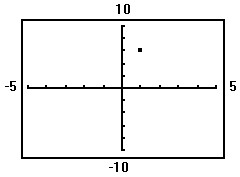Determine the coordinates of the points shown. Tell in which quadrant the point lies. Assume the coordinates are integers. 
A. (1, 3); quadrant II
B. (1, 6); quadrant II
C. (1, 6); quadrant I
D. (1, 3); quadrant I
Answer: C
You might also like to view...
A function f(x) and the numbers L, x0, and ? > 0 are given. Find the greatest value for src="https://sciemce.com/media/4/ppg__tttt0613191435__f1q175g6.jpg" style="vertical-align: -17.0px;" />, such that for all x satisfying
such that for all x satisfying  the inequality
the inequality  holds.f(x) =
holds.f(x) =  ,
, L =
L =  x0 = 8,
x0 = 8, ? = 0.4
? = 0.4
A. -29.091
B. 6.0952
C. -11.6364
D. 0.7619
Divide. Use bar notation to write repeating decimals. -18.48 ÷ (-6.6)
A. 28 B. 3.8 C. 0.28 D. 2.8
Find the length of the arc measuring 100° and radius 22.6 cm. 17. Round answer to two decimal places.
What will be an ideal response?
Use the substitution method to solve the system.-5x - 6y = 523x - 3y = 15
A. (-2, -6) B. (-2, -7) C. (-3, -6) D. No solution